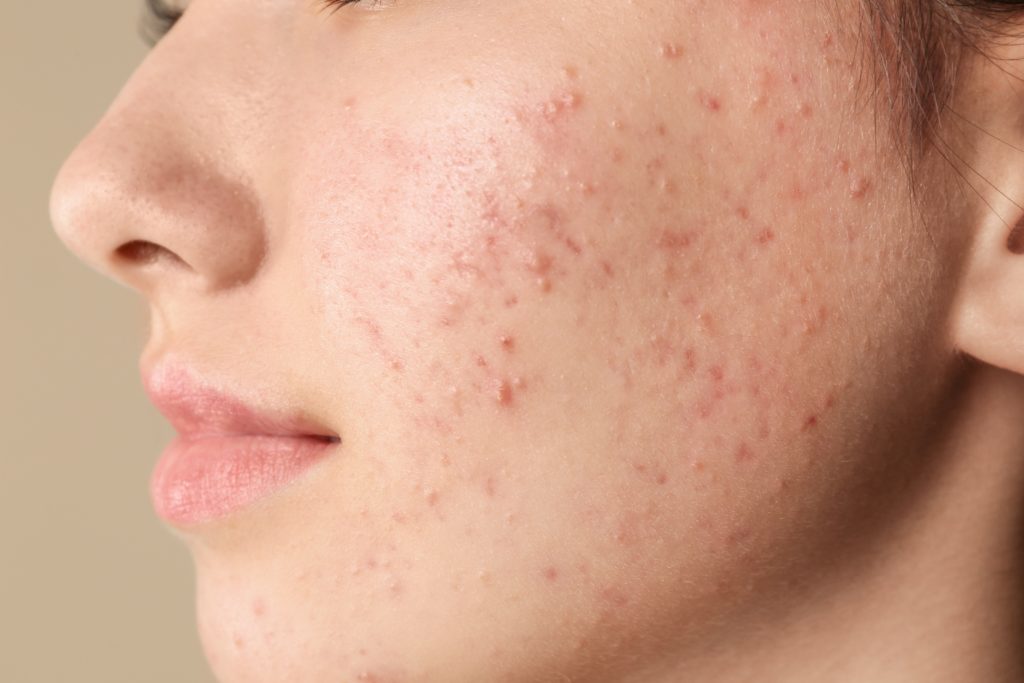Treating acne
By: Kimberly Scwerdtfeger, FNP-C, DCNP

It is safe to say that unfortunately many of us are familiar with acne vulgaris from firsthand experience.
Acne is amongst the the most common skin conditions we see at North Suburban Dermatology Associates, and across the board at all SJH Derm practices. That said, it comes as no surprise that according to the American Academy of Dermatology, acne is the most prevalent skin condition in the United States, affecting an estimated 50 million people per year. Teenagers and adolescents being hit the hardest. Women are the more likely to experience adult acne breakouts than men, which can largely be attributed to hormonal fluctuations.
Though acne is a benign (non-cancerous) condition, if left untreated, there are other long term effects like acne scarring that can occur. Acne can take a toll on ones self esteem and body image, too, which can lead to social distress, isolation, and even depression.
So, what exactly is acne?
Acne is a common chronic inflammatory condition of the skin that starts in the pilosebaceous unit (the parts that make up a hair follicle). Acne results from clogged or plugged hair follicles that are present underneath the skin. The reason a clogged hair follicle occurs is due to excess oil production, accumulation of dead skin cells, proliferation or bacterial infection, and inflammation.
What causes acne?
There are research studies that claim up to 81% of acne cases can be attributed to genetics and family history i.e. if your mom had acne, you will too; while the remaining 19% of cases are due to external or controlled factors or lifestyle choices such as; food choices and diet, stress, how much sleep we get, and so on.
In order to treat acne, it is important to first understand the different types of acne. Generally, acne can be categorized under three types:
- Comedonal (noninflammatory acne) usually does not cause swelling. It is also the most likely to respond well to over-the-counter (OTC) topical creams such as retinoids. Comedonal acne sits close to the surface of the skin and typically does not contain bacteria. This type of acne is more commonly known as:
- Blackheads
- Whiteheads
- Inflammatory acne is associated with swelling and redness, and is typically elevated; it may or may not contain bacterium. Cystic acne can be treated with or a combination of topical ointments and creams and prescription medications.
- Papules (red bumps)
- Pustules (pus filled)
- Nodules
- Cystic acne is the most serious type of acne. It develops when cysts form underneath the skin which can result from a combination of oil, bacteria, and dry skin cells that build up within the pores. Cystic acne should be diagnosed and treated in a dermatology office as often prescription topical and/or oral medication.
As mentioned earlier, if acne is left untreated it may result in long term damage to the skin such as post inflammatory hyperpigmentation (darkening of the skin once acne is gone) as well as scarring. If chronic and repetitive, it may lead to pitting, depressions and can look like mini “craters” on the skin; and keloids – thick, raised scars.
We offer several cosmetic treatments for acne as well. To request an appoint for acne, click here.


